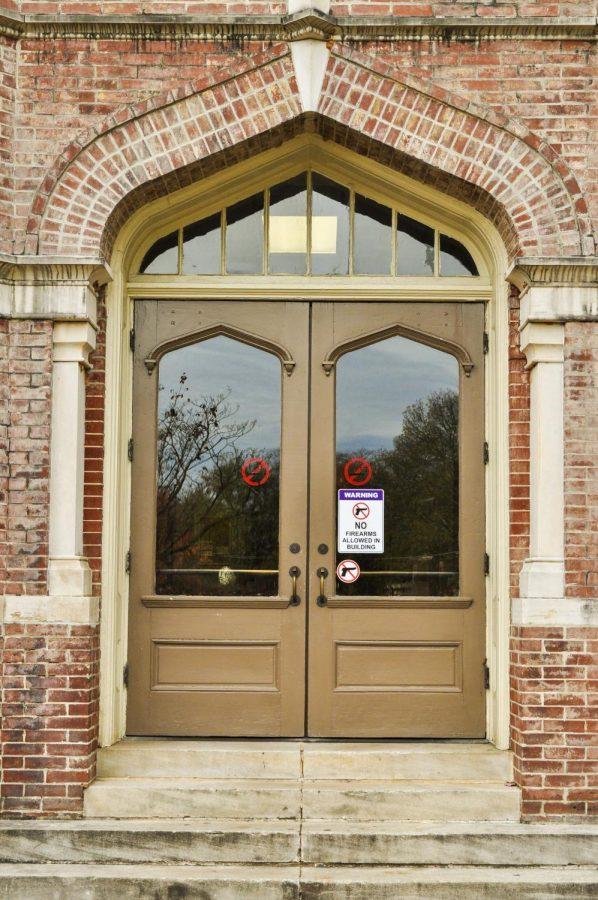UNA brand arches over campus
November 20, 2015
What began as an architectural detail reflective of a popular style quickly transformed into a university brand.
When Wesleyan Hall was built in 1856, the Gothic Revival style was evidenced in the unique arch over the doorway to the main entrance. Now, that same facet is featured on almost every building on campus and even in the campus logo.
Junior Erica Davis said she had never recognized the pattern before.
“I think it’s mostly artistic,” she said. “It gives it a medieval look.”
The arch style on each building has a different influence, said Assistant Vice President for Facilities Administration and Planning Michael Gautney.
“Local architects used that similar style in Lafayette, Collier and even Bibb Graves Hall, but they would be considered Art Deco,” he said. “We also have a Dutch Revival style in Keller Hall where it’s built into a flat wall.”
The most recent implement of the arch was in the Commons Building, which opened March 13, 2014. The architect, Hugo Dante of Create Architects, chose to keep the arch for the entrance to the building.
“The style is blended to look like it’s been here forever, but also adding a lot of class,” he said. “(The arch) is trying to relate what is on campus and make it blend with everything. It’s trying to emphasize that relationship.”
That relationship was equally important to Mindpower, Inc., who designed the university logo in 2008. Officials in the Department of University Communications and Marketing said the company took the stylistic arch they found on each campus building and saw it as a symbol of the university itself.
“I guess people don’t notice (the arch) because they are busy socializing with their peers on the way to class,” said senior Cory Moss. “Or they may be in a hurry, or simply many people don’t care to take the time to really look at architecture like that.”
Moss said he sees both the artistic perspective and the unification in the arch.
“It’s important for the campus to look aesthetically pleasing, but it’s also important for it to feel fluid and like it all goes together,” he said.
While the fluidity is noticeable when brought to attention, many students do not notice the arches or are not taught about them until late in college life, if at all.
The LaGrange Society tries to teach as much to students as they can, but they cannot get everything, said LaGrange Society Member Brooke Chamblee.
“At the beginning of the semester we are given brief details about the buildings and their history,” she said. “Not necessarily the full architecture aspect, but some. People rarely ask about it, so it’s up to each individual member to touch on it. Personally speaking, I try to touch on what I know, but it’s a lot to remember sometimes.”
Chamblee said the Society is constantly learning new things about campus, and they are always welcoming information and speakers.
“We have things called ‘spotlights’ where different people come and teach us about campus stuff at our weekly meetings,” she said. “If you know someone who would want to do that, you should definitely get them to set one of those up.”


